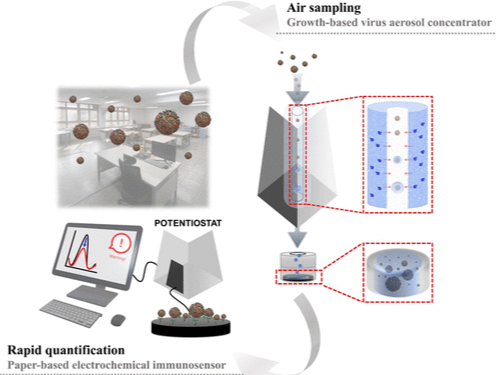Korean researchers have developed a technology to detect influenza viruses in indoor air quickly.
The researchers led by Professor Jang Jae-sung of the Department of Mechanical and Advanced Materials Engineering at Ulsan National Institute of Science and Technology (UNIST) said Thursday they have developed a new surveillance system that captures and quickly analyzes indoor airborne viruses without damaging them. The researchers used the system to detect the influenza A virus.
The system they developed works by sucking air into a device that condenses moisture on virus particles and captures them, which is then detected by a paper immune sensor

The virus sample collected in the collector is transferred to the paper immunosensor, which indicates the virus's presence or absence within 30 minutes. The immunosensor is a detection technology that uses antibody reactions to antigens on proteins. Hemagglutinin (HA) and nucleoprotein (NP) on the surface of the virus are detected by reacting with antibodies.
The developed system can estimate the virus's actual infectivity while reducing the detection time. The existing PCR test detects the virus's genetic material (DNA, RNA), which requires expensive equipment and takes time to amplify. It also detects the genetic material of dead viruses, so it is impossible to determine the virus's actual infectivity.
In contrast, the researchers say the hemagglutinin protein, which is detected in greater amounts the more infectious the virus, can be used to estimate infectivity.
The researchers used the system to analyze 17 air samples from elementary schools. The results showed that four cases detected the influenza A virus (H1N1). The virus could not be detected using commercially available equipment for aerosol epidemiology.
“This technology applies not only to influenza but also to various respiratory viruses, including Covid-19,” Professor Jang said. “Further research to improve the system will contribute to early infection surveillance and response in various spaces such as public places, hospitals, and schools.”
The research paper, “Airborne influenza virus surveillance platform using paper-based immunosensors and a growth-based virus aerosol concentrator,” was published in Environmental Science & Technology, an international journal published by the American Chemical Society (ACS).

